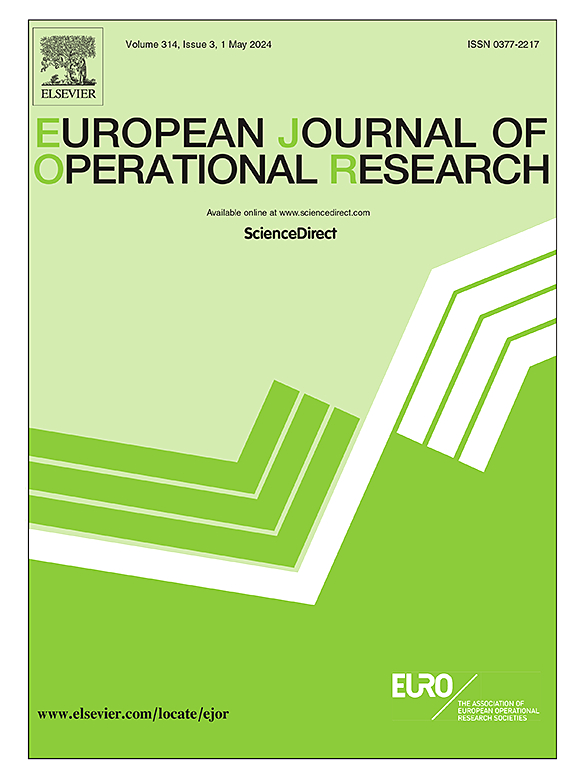Optimal taxes and subsidies to incentivize modal shift for inner-city freight transport
IF 6
2区 管理学
Q1 OPERATIONS RESEARCH & MANAGEMENT SCIENCE
引用次数: 0
Abstract
With increasing freight demands for inner-city transport, shifting freight from road to scheduled line services such as buses, metros, trams, and barges is a sustainable solution. Public authorities typically impose economic policies, including road taxes and subsidies for scheduled line services, to achieve this modal shift. This study models such a policy using a bilevel approach: at the upper level, authorities set road taxes and scheduled line subsidies, while at the lower level, carriers arrange transportation via road or a combination of road and scheduled lines. We prove that fully subsidizing the scheduled line is an optimal and budget-efficient policy. Due to its computational complexity, we solve the problem heuristically using a bisection algorithm for the upper level and an Adaptive Large Neighborhood Search (ALNS) for the lower level. Our results show that optimally setting the subsidy and tax can reduce the driving distance by up to 15% and substantially increase modal shift, albeit at a higher operational cost due to increased taxes. Furthermore, increased scheduled line frequency and decreased geographical scatteredness of freight orders increase modal shift. We found that an additional budget provides a better trade-off between minimizing distance and transportation costs than solely increasing the subsidy level for the partial subsidy policy. In a Berlin, Germany, case study, we find that up to 2.9% reduction in driving distance can be achieved due to 23.2% scheduled line usage, which amounts to an increase of multiple orders of magnitude, despite only using a few stations for transshipment.以最优的税收和补贴激励市内货运的模式转变
随着城市内部运输的货运需求不断增加,将货运从公路转移到公共汽车、地铁、有轨电车和驳船等定期线路服务是一种可持续的解决方案。公共当局通常会实施经济政策,包括道路税和定期线路服务补贴,以实现这种模式转变。本研究采用双层方法对这种政策进行建模:在上层,当局设定道路税和定期线路补贴,而在下层,承运人通过公路或公路和定期线路的组合安排运输。我们证明了全额补贴计划线路是一种最优且预算有效的政策。考虑到该问题的计算复杂度,我们采用启发式的方法,在上层采用二分法,在下层采用自适应大邻域搜索(ALNS)。我们的研究结果表明,优化设置补贴和税收可以减少高达15%的驾驶距离,并大幅增加模式转换,尽管由于税收增加而导致运营成本增加。此外,增加的定期航线频率和减少的货运订单的地理分散增加了模式转变。我们发现,与仅仅增加部分补贴政策的补贴水平相比,额外的预算在最小化距离和运输成本之间提供了更好的权衡。在德国柏林的一个案例研究中,我们发现由于23.2%的预定线路使用率,可以减少2.9%的驾驶距离,这相当于增加了多个数量级,尽管只使用了几个站点进行转运。
本文章由计算机程序翻译,如有差异,请以英文原文为准。
求助全文
约1分钟内获得全文
求助全文
来源期刊

European Journal of Operational Research
管理科学-运筹学与管理科学
CiteScore
11.90
自引率
9.40%
发文量
786
审稿时长
8.2 months
期刊介绍:
The European Journal of Operational Research (EJOR) publishes high quality, original papers that contribute to the methodology of operational research (OR) and to the practice of decision making.
 求助内容:
求助内容: 应助结果提醒方式:
应助结果提醒方式:


